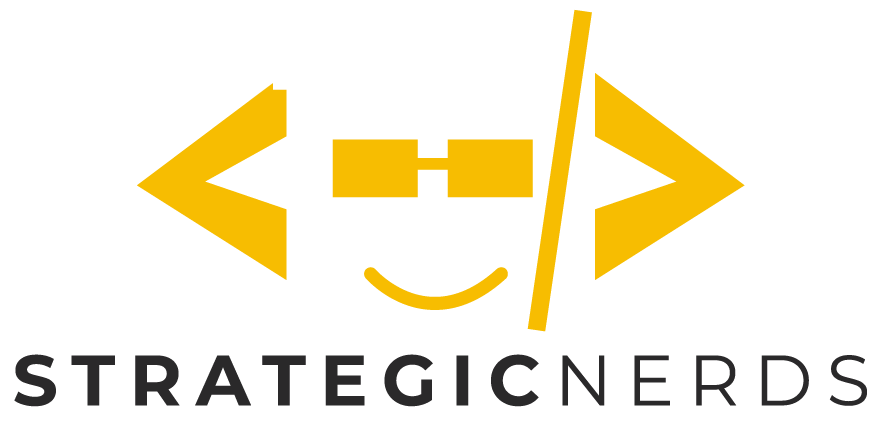How to build an effective sales enablement strategy for early-stage startups

Sales Enablement is the goals/metrics, content, and accountability measures put in place to ensure that your sales team is armed with everything they need to most effectively do their jobs. In this post, I'll cover what sales enablement means to me, coming from the perspective of someone who has led marketing teams for over 25 years, at some of the largest companies in the world and the fastest growing startups in the world. I'll also focus my advice on early stage product-led growth startups since later stage companies tend to have processes already in place and you'll most likely be in a "tweak and modify" state vs. "build from scratch."
Alignment
The first step in any effective sales enablement program is to get alignment across all stakeholders. In a product-led growth company, the three primary stakeholders will be your product team, your marketing team, and your sales team. These teams need to be aligned on the following:
- Ideal Customer Profile (ICP) and target use cases. Who are the customers you want to focus on? Ideally, these will be the customers most likely to convert into paying users. With a PLG motion, you can't really control whether or not customers outside your target use cases sign up, but you can choose to focus your post-signup efforts on target use cases. Alignment on use cases is essential. But a word of advice: the earlier stage you are, the less wed to these use cases you must be. Everyone must be comfortable changing directions. It is a fact of life in early stage startups, and people unwilling to be flexible will likely not succeed.
- Definition of metrics. What is a "sign up"? Are you only counting people who sign up with a business email (i.e., not Gmail or Hotmail)? What is a "conversion"? Are you counting when someone swipes a credit card? Or will it be a more sophisticated analysis of product usage? What is "expansion"? Identify these metrics, get alignment, and then...
- Agree on goals. For each of your metrics, define your target goals.
- Marketing go-to-market plan. Your go-to-market plan will indicate to all stakeholders where the marketing team intends to "go fishing" for leads. Your sales performance will be a function of the quality of your leads, and your lead quality will be affected most by the channels in which you choose to execute your marketing plan.
- Sales strategic plan. What processes and approaches will the sales team use to accomplish the company's goals? As marketing teams, we want to work with a sales team and its existing processes, rather than mold it to our own.
Another area of alignment is around marketing campaigns. Whether you're launching a new feature or product, running an event, releasing content with a microsite, or running paid advertising campaigns, working closely with your sales team will help you amplify all of your results.
- Brief your sales team on campaigns you want to run well ahead of time. Your sales team will have unique insight into whether your ideas or approach will land with customers they're speaking with.
- Identify ways your sales team can pitch in and help. For example, if you're launching a new feature, your sales team more than likely knows which customers will find the feature most appealing. Your sales team can let your customers know ahead of time and potentially secure social media posts or other lightweight testimonials about the value of your feature.
- Listen to your sales team. If your sales team is eager to support your campaign but needs additional collateral, training, or support, you'd be wise to provide them with the assistance they need.
Finally, the last opportunity for alignment comes from the sales team itself. If your sales team is seeing particular interest from a certain geography or customer sub-segment, they may want to work with you on specialized outreach. Some ideas I've run successfully in the past include an in-person breakfast or luncheon event for key potential customers (with a prominent guest speaker in attendance), targeted advertising with specialized messaging, and sponsorship of events that would appeal to the sub-segment. Your sales team has many ideas about how marketing can support and provide cover for their plans. They may "always be closing," but in marketing we should "always be listening."
Now that you have a good idea of who your target customer is and how many of them you will need, you can get to work building out your sales enablement plan.
Building sales enablement content
Marketing is responsible for delivering all sales enablement collateral in early stage companies. Hopefully, most of this content is repurposed from customer facing content you’re already building. Do your best to streamline work and be efficient with your deliverables.
Some companies have dedicated sales enablement teams. In early stage startups, I put this responsibility in Product Marketing. Here are the categories of content I ask Product Marketing to deliver to the Sales team:
- Slide decks, including the first-meeting deck. Depending on your sales team, they may need a generic "introduction to the company and its products" slide deck or they may need use case-specific slide decks ("How this product helps the IoT industry", for example). This is the material sales people will use when speaking with customers. The more time your PMM team spends with the sales team, the more they'll be able to understand the flow of customer calls and work together to identify the necessary content. One key factor I use to understand whether or not PMM is doing their job is to observe how frequently they communicate with Sales and Customer Care to understand the selling process and customer pain points and objections.
- White papers, data sheets, and other collateral. This is follow-on material after the sales call is over. "I remember you mentioning X. Here's a white paper we wrote that will explain how our product helps address X." Other forms of collateral include security white papers, benchmarks, and other quantifiable evidence. Again, the closer the PMM team is to the sales team and its processes, the more likely it is that they will be able to deliver useful materials.
- Competitive battle cards. This is for internal use, not customer consumption, but it is nonetheless essential to train salespeople on the competitive landscape. How do you stack up against the competition? Where do they win, and where do you win? How will your product roadmap fill in your gaps? I try and create a competitive battle card for each main competitor including (crucially) "build it ourselves." I also like to create an industry overview battlecard that highlights what the whole industry looks like at a glance.
- Case studies. Align these to your use case scenarios, obviously.
- Objection handling and FAQs. Over time, the objections customers raise about using your product or switching to your product will tend to fall into predictable buckets. Are they concerned about security? Reliability? Scalability? Etc. Cataloging these questions and arming your sales team with the right answers will help them move calls from frustrating experiences to wins. Once again, and this is a trend, a great PMM will be highly plugged into the sales team's processes.
- A sales portal. It could be a Dropbox, a Google Drive, Notion, or a Wiki like Slab. Whatever it is, you’ll want to have a central location for materials and you need commit to keeping the materials up to date.
Holding sales training
Great PMMs are always in touch with their sales teams and are frequently silent observers on sales calls. In addition, they run frequent training to give sales teams updates on products and roadmaps, and to introduce new collateral as it is built.
PMMs also work closely with senior sales leaders to develop training. Senior sales leaders have a good idea of the type of organization they’re building and who they plan to hire. A training program should reflect future growth of the team.
Two words of advice: first, record the training and make it available on your sales portal. And second, keep things fun! It’s serious business, of course, but training is a great opportunity to gamify learning, keep people interested, and build rapport. That rapport is essential for weathering the invariable lows of business, be it macroeconomic conditions, a missed quarter, a buggy release that leads to churn, or whatever fate throws your way.
Measuring and reporting results
Sales Operations (Revenue Operations) and Marketing Operations are two disciplines that either need to come together or be combined organizationally in order to effectively manage metrics for product-led growth. (For what it's worth, my preference is for them all to be in the same organization, reporting to a single Business Operations (BizOps) leader, probably reporting to the CFO.)
This is a great opportunity to build your "dream dashboard". From my point of view as a marketer, these are the statistics I look at daily:
Funnel: The top of your dashboard gives you a good view of your entire funnel:
- Inbound website traffic (trailing 30 days), with a view of how it has changed over time
- Signups (remember, you need to align on a consistent definition of a signup!), and how they've changed over time
- Conversions (again, alignment is essential), and how they've changed over time
- Revenue and progress towards annual target
Customers: The next level gives you a view of your top 20 customers, the revenue they've driven, and their trend (are they expanding or contracting?) Ideally, you could filter this top 20 on your target use cases, so you could drill in further and see the top 20 customers for each customer segment of importance to you.
Growth: The third level gives you a view of several important growth metrics:
- SEO rankings for top keywords and trend over time
- Top inbound keywords and performance of each for signup and conversion
- Best performing content (by views) and the number of signups and conversions each has driven
- Paid acquisition stats, if any
Summary
Working closely with your sales team is more important than ever. Building a healthy, productive, and collaborative sales enablement process will enable you to amplify your marketing efforts and drive better results. Moreover, your sales team has unique insight into how your product is being perceived by potential buyers, insight that you would be wise to incorporate into positioning, messaging, and go to market.
Need help with your sales enablement process? Let me know!
